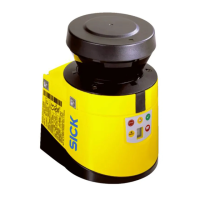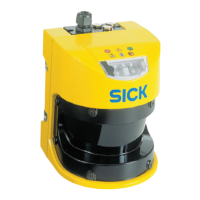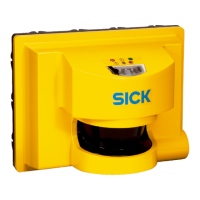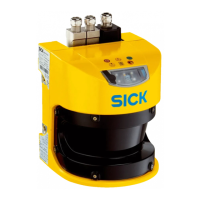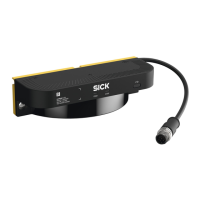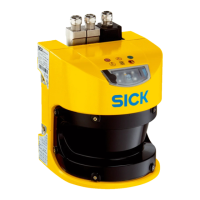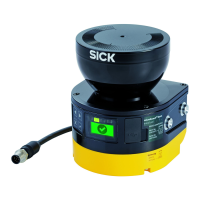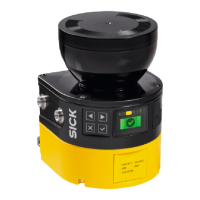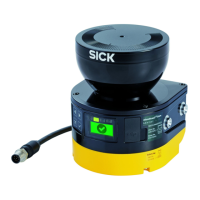Chapter 14 Operating instructions
S3000
170 © SICK AG • Industrial Safety Systems • Germany • All rights reserved 8009942/WK81/2012-11-28
Subject to change without notice
Annex
14.3 Glossary
A
ctive opto-electronic protective device responsive to diffuse reflection (e.g. S3000, see
also CLC/TS 61496<3)
The monitoring cases are switched using the control inputs. The S3000 Advanced has two
static control inputs, the S3000 Professional and S3000 Expert have two static control
inputs and two static/dynamic (for incremental encoders) control inputs.
A means by which the electro-sensitive protective equipment (ESPE) monitors the state of
control devices which are external to the ESPE.
Protective field and warning field form a pair, the so-called field set.
Two safety laser scanners in an EFI system. The control signals for monitoring case
switching are applied to the inputs on the host. The guest is connected to the host via EFI
and receives from the host the input information for local monitoring case switching.
Defines the functionality of the S3000. Five I/O modules (Standard, Advanced,
Professional, Expert and Remote) are available.
A component that produces electrical pulses in proportion to a movement. For these
pulses, various physical parameters can be derived, e.g. velocity, distance, etc.
A field set (if necessary a simultaneous field set) is allocated to a monitoring case.
Monitoring case switching is performed using the control inputs. In this way the S3000 can
be adapted to the operating mode of the machine or system that it monitors.
The OSSD output is the switching output on the S3000. This is a semiconductor output
and is periodically tested for correct function. The S3000 has two OSSD outputs that
operate in parallel; for safety reasons these must be evaluated using two channels.
The protective field secures the hazardous area on a machine or vehicle. As soon as the
safety laser scanner detects an object in the protective field, it switches the OSSDs to the
OFF state and thus initiates the shutdown of the machine or stop of the vehicle.
Two hazardous areas are monitored independently. For this purpose the cut-off paths
must be routed to independent OSSD pairs with the aid of a Flexi Soft safety controller.
Reflection of luminance. A measure of the remission is the level of remission defined as
the ratio of the luminance reflected from a surface in the measuring direction and the
luminance of a completely matt white surface (white standard).
The minimum size of an object that is acquired by the protective device and is guaranteed
by the manufacturer.
The restart interlock is a protective device. In certain situations it prevents the machine
from automatically restarting. This applies, e.g., after the scanner function has triggered
during a dangerous machine state, after a change to the operating mode or the method of
activation of the machine, or after the change to the start control device on the machine.
Contains the opto-electronic acquisition system. Three sensor heads are available (Short
Range with 4 m, Medium Range with 5.5 m and Long Range with 7 m scanning range).
On the S3000 it is possible to simultaneously monitor two field sets each with one
protective field and one warning field or with two protective fields. In conjunction with a
Flexi Soft safety controller, which provides several pairs of OSSD, e.g. two or four
hazardous areas can be protected.
Contains the configuration memory and all electrical connections. In this way the S3000
can be easily replaced. After re-commissioning the configuration is read from the system
plug; the S3000 is then, normally, ready for use.
Glossary
AOPDDR
C
ontrol input: dynamic,
static
External device
monitoring (EDM)
Field set
Host/guest
I/O module
Incremental encoder
Monitoring case
OSSD
Protective field
Protective fields (dual)
Remission
Resolution/
object resolution
Restart interlock
Sensor head
Simultaneous monitoring
System plug
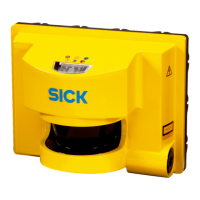
